#sheng pu’er
Text
Tea time from earlier I didn’t have time to post~

🍃 2023 Qianjiazhai Ancient Tree Sheng Pu’er



I feel like I say this for every new tea, but this is my favorite sheng so far. It’s so… gentle. The astringency is there, but it doesn’t punch you in the mouth like other shengs can.
I had a nice long session with it today and got my increases done on the hat I might send to Germany.

Also, the whole gang showed up.
#tea#tea addict#tea time#tea drinker#tea is good#tea is life#gong fu cha#sheng pu’er#pu’er#raw pu’er#tea table#tea tea tea#tea is love#tea packaging#tea appreciation#tea aesthetic#tea set#tea life#tea leaves#tea lover#tea cup#tea break#tea brewing#snake#snake tea pet#ram#ram tea pet#rabbit#rabbit tea pet#dragon
13 notes
·
View notes
Photo

🇮🇹Oggi vi porto nel #Laos 🇱🇦 sugli altopiani di #Bolaven per degustare un #tè verde da alberi selvatici. Non siamo lontani dallo #Xishuangbanna e si riesce a percepire da un vago e leggero gusto simile al #maocha di un #pu’er #sheng. Un tè delicato e abbastanza raffinato. Forse troppo per i miei gusti! Chi mi conosce sa che amo i gusti intensi, selvatici è un po’ grossolani dei tè artigianali a foglia grande che rimangono però sempre i più autentici. Un po’ come le differenze tra un vino di una grande azienda è un vino del contadino. Tuttavia i tè laotiani come quelli dello #Yunnan hanno ancora dei gusti “veri” che ci riescono a trasportare in queste straordinarie e misteriose terre. 🇬🇧Today I take you to Laos 🇱🇦 in the Bolaven plateau to taste green #tea from #wildtrees. We are not far from Xishuangbanna and you can perceive a vague and light taste similar to the maocha of a pu'er sheng. A delicate and quite refined tea. Maybe too much for my taste! Anyone who knows me knows that I love the intense, wild and a little coarse tastes of artisanal large-leaf daye #teas which, however, always remain the most authentic. A bit like the differences between a wine from a large company and a farmer's wine. However, @laotianteas like those of Yunnan still have "real" tastes that they manage to transport us to these extraordinary and mysterious lands. #teverde #greentea #laotiantea #telaotiano #telaos #tealeaves #fogliedite #scuoladiteasommelierjaku #teasommelier #sommelier (presso Scuola di cerimonia del tè Jaku) https://www.instagram.com/p/CkK1GGLMxyU/?igshid=NGJjMDIxMWI=
#laos#bolaven#tè#xishuangbanna#maocha#pu#sheng#yunnan#tea#wildtrees#teas#teverde#greentea#laotiantea#telaotiano#telaos#tealeaves#fogliedite#scuoladiteasommelierjaku#teasommelier#sommelier
0 notes
Photo

It was a true pleasure meeting local queens tea lover @redeyetlover and sharing 2022 gushu lincang pu’er, 1950’s aged baozhong, and 1980’s tong qing hao sheng pu’er. our 1st time meeting has set the bar high for the future! #gushu #agedbaozhong #agedsheng #agedpuerh #newyorkteasociety #nyts_tea_club #teaclub (at Forest Hills) https://www.instagram.com/p/Cj9c2qruM2v/?igshid=NGJjMDIxMWI=
0 notes
Note
What kind of tea does Mei Changsu drink? (If you’re still into Nirvana in Fire.) Or anybody else you’d prefer.
Uh… i’m still into tea! And MCS is such an interesting character that why not? NiF will always hold a DEAR DEAR place in my heart because ffs, it’s still THE BEST cdrama i’ve seen. (i’m watching romance of three kingdoms from 1994 with my husband and our irl friends over discord and WOW the show was great but also very 1994 and a bit of a mess with THE WORST lighting. I will only gif it as a joke to hurt people)
Ok ok. What kind of tea does Mei Changsu drink?
Where do we begin? What does he like to drink? What did he drink as Lin Shu? What does he want to drink? What do we see him drinking?
Ok. Let’s start with something simple. What do we (probably) see him drinking?
I did a quick search in the novel for tea and Hai Yan definitely describes (in all its anachronistic glory) a Yixing teapot with tea that has some foam/suds/bubbles removed. From that combination and my tea experience, I would say he’s drinking some sort of wuyi yancha. Yancha is a style of tea made of fairly narrowly defined cultivars. Famous ones are rougui, shuixian, dahongpao. They tend to be earthy, minerally, floral, and complex. I love them. I will project my love of them onto MCS and say he loves them too! Because they’re interesting. And as oolong tend to have properties suitable for fall drinking in TCM (traditional chinese medicine). It’s moisturizing as the climate gets dry and is neither hot nor cold. I think MCS and Lin Chen can agree drinking yancha is a good choice in the summer! (is yancha anachronistic? Yes, but hai yan already opened that door so this entire ask will be answered by anachronistic answers and i don’t care and/or am too lazy to figure out what was around during when nif was supposedly set)
I also think MCS would drink a lot of red teas. Per TCM, in the winter, red (what westerners call black) tea is suitable. It’s warming, fragrant, soothing and gentle on your GI tract. Qimen Red, Lapsang Suchong, Yunnan Old Tree Red teas are all things MCS’s friends would find and give him. They’re delicious. He drinks them. Mostly doctor’s orders.
What did he drink as Lin Shu? Green tea. Fresh, pre-qingming, imperial tribute green tea. He was a kid. He was super spoiled by TaiNaiNai. TaiNaiNai was super spoiled by the emperor. Lin Shu would get TaiNaiNai’s favorite teas. Since I love pre-qingming dragonwell and it is one of the CLASSIC chinese greens, i’m going with that one. They drink it all through the summer and TaiNaiNai saves an extra bit for him in the winter. Why? Because green tea, per TCM, is supposed to have a cooling effect (解暑, antidote/relieve + heat) and Lin Shu is a little furnace of a human. The perception of the cooling effect can, from a western science perspective, be attributed to receptors on your tongue being activated that perceive cool things… But that’s not really something period non-specific ancient china would care about so uh… moving along.
TaiNaiNai, as an old lady, also drank a lot of pu’ers. They’re good for the stomach and aid in digestion. They also can be helpful in dealing with excessively greasy foods and, like green teas, cooling the body. Lin Shu drank this a lot with TaiNaiNai and liked the ones that had lingering sweetness and crisp fragrance. (seriously, i had an AMAZING sheng pu today and the sweetness lingered for MINUTES in my mouth after drinking the hot tea. I cannot begin to describe how much fun it was and how mind blowing it is to have a tea do that. Imagine Lin Shu, age 7ish, drinking some really nice sheng pu, aged 10-20 years, zero astringency, full leaves. The tea tastes like slightly sweet warm water. TaiNaiNai tells him to swallow and then really taste what lingers in his mouth. This is how he learns about salivation, about huigan (the return of a sweetness), and lingering aromas in sheng pu. This is how his love of tea blossoms.)
What does MCS want to drink? TaiNaiNai’s green tea and sheng pu. As MCS, since he’s always suffering from the cold, he is almost never allowed to have either, per Lin Chen’s orders. He keeps some around, makes it for Fei Liu, sneaks in a sip or two here and there. The quality is always good but not as good as TaiNaiNai’s. Is it really due to the quality of the tea? Or the quality of his memory of being TaiNaiNai’s favorite grandchild? Lin Chen and MCS also argue about that. MCS states the former. Lin Chen snatches the tea away, retorts the latter, and then tells MCS it really doesn’t matter since he shouldn’t be drinking it anyway. After TaiNaiNai dies, Nihuang brings MCS some tea TaiNaiNai had given her. It really doesn’t taste the same. Lin Chen doesn’t say anything when MCS brings it up later. They realize some of it is due to the huohan poison and all the stuff MCS went through… and that’s not something worth fixating on.(I know mcs still likes the same snacks or something like that since jingyan’s mom is making those for him... but i kinda like the idea of him also having some perceptions change... so i’m going with it.)
Bonus: when his meridians and the huohan aftereffects are really acting up, Lin Chen makes him drink a lot of TCM brews – not tea. But also, Lin Chen has sought out tea masters to make “experimental tea” for MCS: take cultivars usually made into oolongs and over oxidize them into red teas. This is actually a thing that’s growing more common in the modern tea world. I’ve had some black/red teas made from oolong material and it’s DELICIOUS. And idk where the TCM properties come from, so MCS can have some modern experimental teas as a treat.
#nirvana in fire#you can't spell knife without nif#i made sure there would be knives#also it's mcs#what do you expect#thanks for the ask!#this was a lot of fun!#i am still freaking out about the tea i had earlier today#lin shu#mei changsu
98 notes
·
View notes
Text
Island Old Tree Sheng Pu'er Made by 2014 Pu-erh Materials Collecton Shen Pu'er Tea 357g
Island Old Tree Sheng Pu’er Made by 2014 Pu-erh Materials Collecton Shen Pu’er Tea 357g
Product Name: Arbor Old Tea Shen Puer
Manufacturer: Yunnan Runxiu Tea Industry Co.,Ltd.
Production date: 2017
Raw materials date: 2014
Raw materials: Yunnan large-leaf tea raw materials
Weight: 357g / Pc
Origin: Kunming, Yunnan, China
Storage: Ventilation, cool, dry, no odor, long-term preservation in a pollution-free environment.,
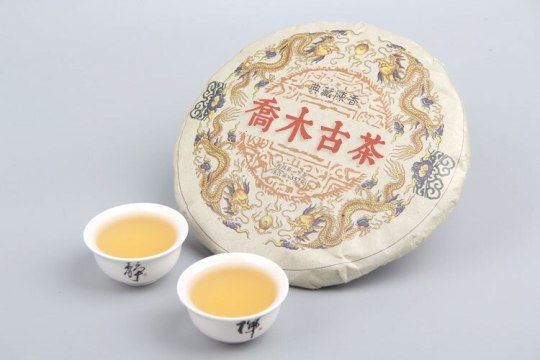

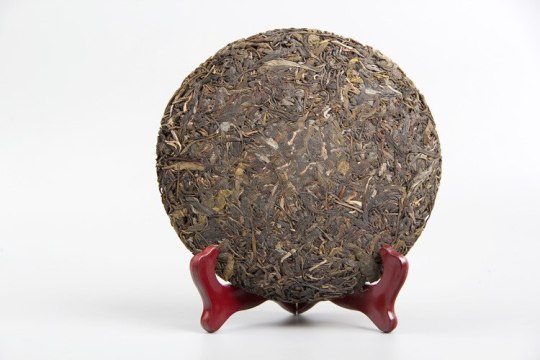
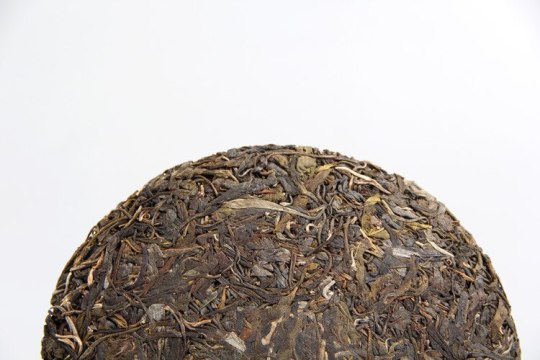
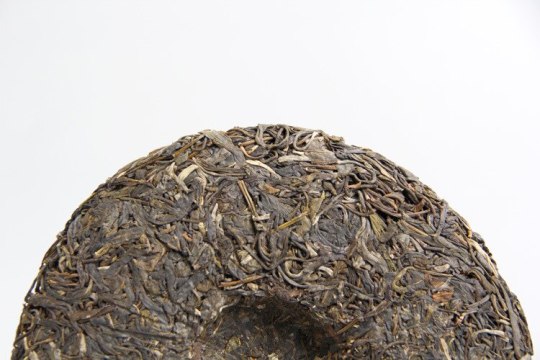






View On WordPress
0 notes
Text
Best Pu-erh Tea Cakes of the World
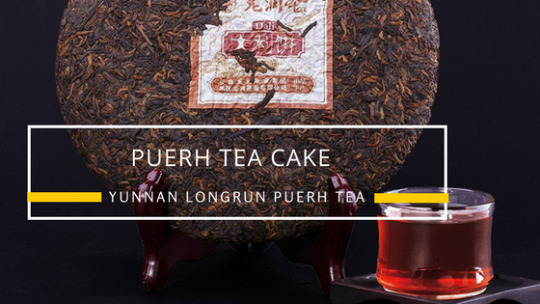
Pu-erh is a special kind of tea produced from large-leaf variety of Camellia Sinensis plants that grown in Yunnan Province, China. This is the only tea variety which improves in taste and flavor along with age like finest quality wine. So, sometimes, it’s also called as aged tea or living tea. More aged means more in-depth taste and distict flavor.
There are two types of Pu-erh tea cake – raw / unfermented pu’er tea and ripe / fermented Pu’er tea..
We have compiled this list of top 10 best Pu-erh tea cake brands in order to make your search easy and convenient for finest quality pu-erh tea cake. This list contains both raw and ripe Pu-erh cakes.
Best Pu-erh Tea Cakes List
1. Melody of Yiwu Mountain – Aged Raw Pu-erh Tea Cake
2. Lao Banzhang Raw Pu-erh Tea Cake – Chen Sheng Hao Raw Pu-erh Tea Cake
3. Sheng Pu-erh Wild Tea – Raw Pu-erh Tea Cake
4. Wild Grown Pu-erh Tea Cake – Pudao’s Puer Pu-erh Tea Cake
5. Golden Buds Pu-erh Tea – Organic Ripe Pu-erh Tea Cake
6. Shu Fermented Pu-erh Tea – Shou Pu-erh Tea Cake
7. Yunnan Organic Fermented Pu-erh Tea Cake
8. Brightea Aged Ripe Pu-erh Tea Cake
9. Yunnan Longrun Pu-erh Tea Cake
10. Yunnan Longrun Pu-erh Tea Cake – 826
Flavor profile of each brand is somewhat different from each other. To know more
READ THE COMPLETE REVIEW
#puerhtea#puer tea#brick tea#tea cake#aged tea#shu puer tea#cooked puerh tea#ripe puer tea#chinese tea#living tea
0 notes
Text
100g (0.22LB) Caicheng Fragrant White Tea Moonlight Old Puerh Tea Puer Raw Tea Beauty Tea Old Tree Organic Food Tea White Peony Tea Green Food Raw Tea Sheng cha Chinese Tea
Price: $11.49 - $5.75
(as of Apr 21,2019 13:08:20 UTC – HELLOYOUNG
Pu’er tea is mainly produced in Xishuangbanna, Linyi and Pu’er in Yunnan Province. Pu’er Tea pays attention to brewing techniques and art of drinking, and its drinking methods are rich, both for drinking and mixing. Pu’er tea tea soup is rich in orange and yellow, with high aroma and long-lasting aroma. It has a unique fragrance, rich taste and long-lasting resistance to foaming. Pu’er tea has many functions such as lowering blood fat, losing,, the weight, inhibiting bacteria, helping digestion, warming the stomach, producing fluid, quenching thirst, sobering and detoxifying. It can clear the stomach and stimulate the body, eliminate digestion and phlegm, hangover and detoxification, diuretic and dispelling cold, relieve cough and phlegm, and lower blood cholesterol. Pu’er tea itself contains fat-decomposing lipase. This lipase has a good effect on the decomposition of fat. For many people who are reducing their stomachs, they can play a role in fat digestion and consumption. Moreover, Pu’er tea can also protect the stomach.Pu’er tea has many functions such as lowering blood fat, losing,, the weight, inhibiting bacteria, helping digestion, warming the stomach, producing fluid, quenching thirst, sobering and detoxifying. It can clear the stomach and stimulate the body, eliminate digestion and phlegm, hangover and detoxification, diuretic and dispelling cold, relieve cough and phlegm, and lower blood cholesterol.
The post 100g (0.22LB) Caicheng Fragrant White Tea Moonlight Old Puerh Tea Puer Raw Tea Beauty Tea Old Tree Organic Food Tea White Peony Tea Green Food Raw Tea Sheng cha Chinese Tea appeared first on PARNALA.
source https://parnala.com/blog/100g-0-22lb-caicheng-fragrant-white-tea-moonlight-old-puerh-tea-puer-raw-tea-beauty-tea-old-tree-organic-food-tea-white-peony-tea-green-food-raw-tea-sheng-cha-chinese-tea/
0 notes
Text
¿Conoces Los Seis Diferentes Tipos De Té De Especialidad?
Existen más de 20.000 tés diferentes en el mundo, según Mary Lou y Robert J. Heiss en The Tea Enthusiast’s Handbook: A Guide to the World’s Best Teas. Pero si te interesa aprender acerca del té de especialidad, hay seis tipos principales con los que querrás empezar.
Así que, hazte una infusión y prepárate para aprender sobre la diferencia entre el matcha, oolong e English Breakfast.
Read this in English Do You Know The 6 Different Kinds of Tea?
Cata de té. Crédito: Kaith Sandoval
Té vs. Tisana
Camina por el pasillo de la sección de tés de cualquier supermercado, o incluso, da un paseo en una tienda de té de especialidad, y verás una gran variedad de tés: menta, manzanilla, oolong, Rooibos…
Pero, en realidad, no todos son tés. Algunos son solo tisanas.
El té procede del arbusto Camellia sinensis. Toda bebida que no está hecha con esta planta no es té propiamente dicho. El té de frambuesa, de hibisco, de jengibre; aunque sean deliciosos, tienen un nombre equivocado.
Estas hierbas se convertirán en una tisana. Crédito: Sonder Coffee & Tea
Una Breve Observación Respecto A Las Variedades De Té
La Camellia sinensis es la especie del té, pero, así como ocurre con el café Arabica, encontrarás subespecies que crecen naturalmente y variedades que se cultivan. No analizaremos las variedades de té en mucho detalle en este artículo, pero estudiaremos rápidamente los conceptos básicos.
Existen tres variedades de té principales que se comercializan: Sinensis, Assamica y Cambodiensis. La Sinensis, según Royal Tea New York, se adapta a los climas fríos mejor que las otras variedades. Esta planta es originaria de China, pero también se encuentra en Japón, Taiwán, India y Nepal. La Assamica se encuentra principalmente en India, Sri Lanka y África, aunque procede originalmente del Sudeste Asiático. Y la Cambodiensis es común en Camboya y Java, pero es raro que bebas una infusión pura de esta variedad; esta planta suele usarse mayormente en híbridos.
También hay muchas subvariedades, variedades cultivadas y, por supuesto, variedades nativas cuyo consumo comercial no es muy difuso. Y al igual que con el café, no todas las variedades de té se adaptan a todos los climas en los cuales se produce té.
También te puede gustar Introducción a la Catación de Té
Distintas variedades de té listas para la cata. Crédito: Ankori Tea
Las 6 Categorías Principales De Té
Sin embargo, antes de que empieces a explorar el mundo de las variedades de té, debes entender las categorías principales: negro, oolong, verde, blanco, amarillo y fermentado/Pu’er. Esta es la primera pregunta que te hará un vendedor o un asistente cuando vayas a comprar té. Además, esto tiene un fuerte impacto en el sabor y la temperatura de infusión ideal para el té.
Y todas estas categorías dependen de la oxidación.
Los tostadores de café reconocerán el término “oxidación” como la reacción de Maillard, pero con el té es muy diferente. Esta reacción química oscurece el color de las hojas, agrega aroma y sabores; en particular, según Tony Gebely de World of Tea en su libro Tea: A User’s Guide, teaflavinas y tearubiginas.
Las teaflavinas, como explica Gebely, añaden frescura, brillo y un color amarillo. Las tearubiginas aportan profundidad, cuerpo y un color rojizo.
Se puede detener, promover o controlar de otra forma el proceso para que tenga un efecto en la taza final. Así que, veamos las distintas maneras en las que esto sucede.
Té Pu’er Dali Tuo. Crédito: Ankori Tea
Té Negro/Rojo
El té negro es el más oxidado de todos los tés y Kasim Ali, propietario de Waterloo Tea y fundador de la Tea Brewers Cup, me dijo que se vende como “té rojo” en el mercado chino. En el instante en que se recolectan las hojas, empiezan a marchitar e inicia el proceso de oxidación. Luego, se suelen triturar o enrollar para acelerar el proceso.
El perfil de sabor es fuerte, con mucho cuerpo y profundidad. Dado que es el té más oxidado, debería prepararse con las temperaturas más elevadas. Kasim Ali recomienda entre 95–100℃/203–212℉. Y casi como con el café, cuanto más alta sea la temperatura, más amargo será el sabor de la infusión.
Algunos de los tés negros más famosos son la mezcla English Breakfast y el Earl Grey, que es saborizado con bergamota.
Además, el té negro es el que más se consume en el mundo occidental y existen tradiciones específicas para beber té en cada región. Estas incluyen el chai de India (té negro con leche y especias) y la costumbre británica de agregar leche y/o azúcar (algo que a menudo deja perplejo al resto de Europa).
Este té negro se ha dejado en la taza, donde seguirá en infusión. Crédito: Tea Angle
Té Oolong/Wulong
La única diferencia entre el té oolong y el wulong es el nombre. El oolong es el que más se conoce en los países occidentales, pero los lingüistas dirían que wulong es la transcripción más exacta del kanji chino original al alfabeto romano.
Asimismo, el té oolong tal vez sea una de las categorías de té más grandes: según Max Falkowitz en Serious Eats, la oxidación puede ser de entre 8 y 85 %. Esto significa que te puedes encontrar con sabores muy distintos.
Cualquier procesamiento del té oolong empieza con algún modo para promover la oxidación, como dañar los bordes de las hojas. También termina con una forma de “fijación”, es decir, el proceso con el que se detiene la oxidación. Esto podría ser el tueste en una sartén, la cocción al vapor o al fuego u alguna otra manera de exponerlo al calor. Sin embargo, Gebely afirma que el proceso entre la oxidación inicial y la fijación variará debido a los distintos niveles de oxidación.
Cuando se hace la infusión, Kasim sugiere que los tés de oxidación media se preparen a 85℃/185℉, mientras que los tés menos oxidados deberían prepararse a 80℃/176℉.
También te puede gustar Por Qué el Té Oolong de Alta Montaña Está Causando Tanto Furor
Hojas de té Jingmai Oolong. Crédito: theoolongdrunk
Té Verde
El té verde sufre muy poca oxidación. Luego del marchitamiento inicial, se debe fijar las hojas rápidamente. Esto tiende a darle un perfil más ligero y también su sabor se perderá más rápido que en el té negro o el oolong.
Además, es común asociarlo con Asia, pero hay diferencias importantes entre lo que ofrecen los distintos países asiáticos. Para empezar, Mary Lou y Robert J. Heiss señalan que el té verde chino y japonés tienen un sabor muy diferente gracias a las variedades y al terroir (The Tea Enthusiast’s Handbook: A Guide to the World’s Best Teas).
Luego, tienes la forma en la que se procesan y preparan los tés verdes y cómo se lleva a cabo la infusión. Esto da como resultado categorías como sencha, matcha, longjing y biluochun.
El matcha, que se muele hasta obtener un polvo, probablemente es el té verde más conocido gracias a los “matcha lattes” de Starbucks. Es la categoría de té verde de calidad más alta de Japón y se muele hasta reducirlo a un polvo (lo cual implica que se enrancia pronto). El matcha se consume en la ceremonia del té tradicional de Japón.
Ali recomienda preparar los tés verdes chinos a 75℃/167℉, pero los tés verdes japoneses a 65℃/149℉. “Algunos tés verdes japoneses se extraerán mejor cerca de los 50℃ (122℉)”, agregó.
Té verde Hui Ming green de la región Zhenjiang en China. Crédito: Ankori Tea
Té Amarillo
El té amarillo es un poco menos conocido, pero es un tipo de té preciado que se produce en China. Es similar al té verde, pero pasa por una etapa en la que adquiere el color amarillo. Kerri Shadid explica en The Daily Tea que, tras la fijación, las hojas se envuelven en una tela que permite que ocurra una leve oxidación por segunda vez. Luego, se secan lentamente sobre carbón caliente para fijar el té por última vez.
Shadid describe esta bebida como “más aromática y ‘madura’” y dice que no posee esa “astringencia” que puede tener el té verde. Ella recomienda dejarlo en infusión de uno a tres minutos en agua a 77–82℃ (170–180 ℉).
Corea también produce un té que denomina “té amarillo”, pero muchos expertos del té lo consideran distinto al té amarillo chino.
Té amarillo de Xiang Ya. Crédito: Ankori Tea
Té Blanco
El té blanco se describe a menudo como no oxidado, pero esto no es exacto, porque la exposición al aire siempre producirá algo de oxidación. Está hecho principalmente con los capullos jóvenes de la planta de té, cuando aún están cubiertos con pelos blancos; de ahí el nombre del té.
El sabor es el más suave de todos los tipos de té y se lo define con frecuencia como el más complejo y delicado. Puede ser afrutado y floral.
Té blanco listo para preparar. Crédito: Ankori Tea
Té Fermentado/Pu’er
La oxidación a veces se denomina fermentación, pero esto no es exacto. Solo hay una categoría de hojas de té fermentadas: el más famoso de ellas es el Pu’er chino.
Estos tés se fermentan luego de la oxidación y la fijación. Esto significa también que puedes dejar que las hojas añejen, de forma muy similar al vino.
Ten en cuenta: esto es distinto del Kombucha, que se fermenta una vez que el té ya está preparado.
¡Conoce más! Lee Pu’er: El Té Fermentado Que Todos Quieren Probar
Té Sheng Pu’er. Crédito: Ankori Tea
Al igual que con el café, no hay dos tés iguales. La variedad, el terroir, la producción, el procesamiento y la infusión tienen un impacto en el sabor final de la taza. Pero si quieres aprender más acerca del té de especialidad, empieza por probar estos seis tipos diferentes. Sus distintos perfiles de cata te acercarán a la enorme variedad que esta bebida tiene para ofrecer.
¿Disfrutaste este artículo? Lee Guía de Preparación de Té: Como la Calidad de Agua Afecta el Sabor y Claridad
Escrito por Tanya Newton. Crédito de imagen principal: La Marzocco Cafe.
Traducido por Laura Fornero. Traducción editada por María José Parra.
Perfect Daily Grind
The post ¿Conoces Los Seis Diferentes Tipos De Té De Especialidad? appeared first on Perfect Daily Grind.
from Perfect Daily Grind https://ift.tt/2Uh7X81
0 notes
Text
The 2019 Sprudge Guide To Teamakers and Ceramics
I hesitated in writing this guide. The world of teaware is vast and intimidating, and can be a money pit of fakes and forgeries. It is also where so much of the joy in loving tea can be derived. Ultimately our team felt Tea Week would be incomplete without some sort of feature on teaware. My very best attempt at this here in 2019 is what follows.
For coffee lovers, you might think of teaware as like the espresso machine of the tea world. To casual drinkers or the untrained eye, it just looks like a nice object that makes the thing you drink—and nothing more. But for those who obsess it can become an endless quest of sourcing and seeking, of pride and cost. A life’s pursuit, even. There is no small amount of money to be spent at the top end of teaware buying—may I call your attention to the infamous Chengua-era “chicken cup,” which sold for $35 million at Sotheby’s in 2014. For our purposes this guide caps objects at the $500 range, with prices average considerably less for most of the offerings.
Photo by Anthony Jordan III.
Note that this guide only barely touches on the world of Yixing, the traditional tea pottery of Jiangsu, made using porous clay in a style dating back to the 10th century. This is its own whole world, a vast guide I don’t feel prepared to lead at this time—perhaps in a few more years.
For now, these wholesalers and makers are more than enough to get you started and find new favorites. The guide below is hopelessly biased towards my own personal taste but hey—teaware is supposed to be personal. That’s part of the fun, and it’s something I hope you are inspired to explore further with support from this guide
A Solid Foundation
Photo courtesy of Rishi Tea.
Rishi Tea
Rishi is a truly solid place to get started with home teawares, offering for example this workhorse starter gaiwan for $12, and this cute little basic tea tray for $25. They’ve also got a lovely collection of flex items, like this stunning blue studio-made celadon “fairness pitcher” from Taiwan, or this rustic clay and mineral cup. Rishi ships free domestic at $25, which is plenty to get started making gong fu cha—pair that $12 gaiwan with, say, a couple of oolong samples (we like Rishi’s Iron Goddess of Mercy and Phoenix Dancong) and you are off to the races.
Photo by Anthony Jordan III.
Breville
Breville is the presenting sponsor of Tea Week on Sprudge—for which we thank them!—but they also produce a range of tea-focused hot water boilers and teamakers we have no lie legit been happily using in Sprudge Studios for the last few years, long before this content package was a twinkle in the editorial eye. The Breville Tea Maker Compact‘s tech allows you to set up brew parameters for whatever kind of tea you’re into; the machine’s automated basket then plunges your brew into water heated to your temp of choice. When the cycle is done, the basket lifts out of the water, ensuring you won’t oversteep. I’d liken this machine to something like a nice home batch brewer, a simplifier that’s perfect for tea making on a busy morning or for large groups (for which the classic Tea Maker is a bigger, better fit).
Another option is the Breville Smart Tea Infuser, which we especially dig these Tea Makers for their handiness with single-steep tisanes, like those from Smith Tea, Song Tea, and Tea Dealers featured in our tisane spotlight. We also really like their IQ Kettle Pure (pictured above) for heating water consistently and at scale—you can transfer from there into a ceramic kettle for service, or pour directly from the Breville IQ.
If you are looking for a fusion of tea, taste and tech, this is the gear for you.
Photo courtesy of Manual.
Manual Tea Maker No1
Chicago tinkerer Creighton Barman puts out new stuff each year, typically pre-funded on Kickstarter, but we’re still in love with this 2016 release, the Tea Maker No1, a modernist reinterpretation of the gaiwan built for ease of brewing. Double-walled glass is the hook here, which keeps the Tea Maker cool to the touch throughout the brewing process, and also gives you peek-a-boo viewing at all that beautiful steeping action. I think these gaiwans offer a rare degree of utility no matter where you are in terms of tea knowledge and experience—they are rad and very forgiving for beginners who are still mastering the whole gaiwan thing, but also fun for experts who want to incorporate western and modern influences into their teaware collection.
Let’s Geek Out
Photo by Anthony Jordan III.
Bitterleaf
With full respect to Bitterleaf’s collection of teas for drinking (featured in our buying guide), the site’s assortment of teawares, tea tools, tea pets, and assorted Chinese tea ephemera is truly deep and excellent.
From beautiful little studio tea cups (starting around $8) to Chaozhou teapots in a range of classic styles (more like $80) to really cute hand-painted animal vessels ($35) to all manner of entry-level trays and supports (prices vary) and much more, there are hundreds of pieces of tea kit to shop from and swoon over at Bitterleaf. I especially like their selection of “tea pets,” little clay figurines typically depicting children or animals, incorporated into tea service as a symbol of good luck. You “feed” the tea pet with excess water or tea throughout the teamaking process, with the clay left to develop a lovely luster over repeat feedings. (It’s fun. Don’t @ me.)
Photo by Anthony Jordan III.
Song Tea
Song Tea are also featured in our tea buying guide for their literally life-changing (as in it changed my life) compendium of meticulously curated tea offerings. But the ceramics offered by Song are on another level. Founder Peter Luong has an eye for relatively young and emerging artists, making commissions across his travels to Taiwan. Works by artists like Zhang Yun Chen (Nantou), Qiu Qing Yun (Meinong), and Hu Tie Ha (Jiefen) evoke what’s possible at the blurred edge of collectible art and practical working pottery. I cannot realistically see myself being someone who collects art to hang on the wall, but the idea of owning this Husk #2 tea bowl by Zhang Yun Chen gives me heart palpitations. If you are, say, truly enjoying tea week and would like to, you know, say thank you as a grateful reader or whatever, please buy this for me. DMs are open.
Photo courtesy of Pu.Erh.Sk
Pu-Erh.Sk
Based in Slovakia, Pu-Erh.sk is an online webshop shipping worldwide, focused on sheng and shou Pu’er teas from Yunnan. Their tea sourcing is concise and well-considered—the gushu heads love ‘em—but for me the site’s focus on Eastern European ceramicists and teaware artisans has been a revelation. Czech artists like Jiří Duchek and Jura Lang are building truly compelling, one-of-a-kind teawares that fuse traditional regional clays with far-flung design influences from the east and west. Pieces like this gorgeous Jura Lang shiboridashi (a kind of Japanese easy gaiwan) are handmade, wood-fired, visually stunning, and sure to grow in beauty over repeated use. For beginning collectors and enthusiasts to be able to get in the door with an artist-specific work like this at just €65 is really special. Elsewhere on the site, Swedish artist Stefan Andersson makes a range of gorgeous wares, while Norwegian brand Ad.Infinitum offers bespoke and vintage tea ceremony linens. All of these makers are brands with followings in their own right, collected by Pu-Erh.sk for easy ordering and global shipping.
Everybody’s taste is different, and a lot of tea ceramics collections start and end in Asia, with no deviation. But I really grok the vibe of this stuff coming out of Eastern Europe. To get in at the cutting edge of small maker European ceramics artistry, go here.
Ceramicists To Watch—And Collect
*A note: While I am personally passionate about ceramics and hopelessly biased towards its validity and urgency as an art form, I also think you—whomever you are reading this—might really dig works from the artists below. The idea of placing a commission with an individual artist might seem intimidating or overly expensive, but we’re not talking George Ohr here; works from these artists don’t typically cost more than $100 for a single piece of teaware, and more like $30-$50 for a handmade cup or set of cups. For less cost than a single dinner at a fancy restaurant you can own and put into daily use your own personal work from a talented artist. It will make your tea taste better, your kitchen look cuter, and who knows—in 50 years you might get a segment on the Antiques Roadshow.
Here are a few talented and emerging ceramicists to follow.
Photo via Song Tea.
Lilith Rockett
Portland ceramicist Lilith Rockett works across a range of expressions for home pottery, including plates, lighting, vases, and abstract decorative objects. Her style—lustrous soft milky white porcelain, entirely handmade—translates well into tea, especially the stunning wheel-thrown porcelain gaiwan. A significant amount of tea consumed for the purposes of Tea Week on Sprudge was steeped in just such a piece. Rockett has a webshop, and also accepts limited commissions. You can find her work at some of the best restaurants in the United States, including The French Laundry (Napa), Smyth (Chicago), Saison (San Francisco), and Nodoguro (Portland).
Follow Lilith Rockett on Instagram.
Photo via Carole Neilson.
Carole Neilson
Buzzy San Francisco-based artist Carole Neilson fuses the rural pottery traditions of her native Alsace with an irresistible contemporary immediacy. Her eye-catching signature glazes evoke smoke fumes and clouds of dust, making for pottery with an earth-dappled glow. Neilson’s range of works include original sculpture pieces and stunning bowl and plate sets, but for tea (and coffee!) drinkers her small cups and pitchers make a lively addition to any collection. Neilson’s work is blowing up, with a growing list of stockists, gallery exhibitions at spaces like Hugomento, pop-up dinners around the country (including a recent dinner at Omaha’s Archetype Coffee), and a successful recent series of artist grants. She is truly an artist to watch. Neilson has a webshop and accepts limited commissions.
Follow Carole Neilson Ceramics on Instagram.
Photo by Anthony Jordan III.
Qi Pottery
Kim Whyee Kee of Qi Pottery first learned his art behind bars. After serving time in the Singaporean corrections system for gang-related crimes, Kee graduated from an arts college, helped co-found a variety of initiatives working with at-risk youth, and launched Qi Pottery in 2016. His style echoes ancient tea traditions, but does so through a burst of heart-stopping colors that demand attention. Vivid pinks, deep blues, mesmerizing blacks, coral reds—Easter egg pastels that fuse the practical nature of teaware with the elegance of a home statement piece. But this is no gimmick maker—Qi Pottery’s mastery extends to more simple forms, like these beautiful rusted large format cups.
Photo by Anthony Jordan III.
It’s simply some of the most beautiful ceramics work I’ve ever seen, and for an artist with just a few public showings so far, you can certainly expect these pieces to become more and more sought after and valuable over the years. Qi Pottery has a website, but no webstore. If you’re interested in purchasing an existing piece or making a commission, please contact the artist directly via email or Instagram.
Follow Kim Whye Kee of Qi Pottery on Instagram.
Photo by Anthony Jordan III.
Arturo Alvarez
A full-time artist dedicated to original teawares, Arturo Alvarez is based in Olympia, Washington, and crafts art in a range of styles and expressions. We commissioned Alvarez for our office tea set at Sprudge Studios (we’ll be serving tea there this week as part of the Tea Week fun), and follow his regular updates on Instagram, where his account @your_pencil is part of a thriving Instagram ceramics community. Perhaps his most distinctive pieces involve incorporating found materials, including driftwood handles made from wood found across Puget Sound beaches, but this is an artist growing and advancing his craft before our very eyes, letting it all play out online. Follow him and watch along—it feels like he’s debuting new pieces almost every day.
Photo by Anthony Jordan III.
Arturo Alvarez sells a limited number of teawares online via Etsy. Contact the artist directly via Instagram for commissions or to purchase pieces featured on his account.
Follow Arturo Alvarez on Instagram.
Photo by Anthony Jordan III.
Andrzej Bero
A teaware potter out of Warsaw, Andrzej Bero specializes in the shiboridashi—a gaiwan variant that’s easy to use and, in the right hands, a piece of working art. Bero’s shibos are made from clay that feels coarse and tactile to the touch, in a range of dark reds, greens, and blues. This style translates especially well to larger pieces, like his 300ml teapots, which are hotly in demand for tea services around the world. Andrzej Bero has a website but no webstore; a limited number of his works are available for purchase via the aforementioned Pu-Erh.sk. Contact the artist directly for commissions and availability.
Follow Andrzej Bero on Instagram.
Jordan Michelman is a co-founder and editor at Sprudge Media Network. Read more Jordan Michelman on Sprudge.
Editor: Scott Norton.
Top photo by Anthony Jordan III (@ace_lace).
Sprudge Tea Week is presented by Breville USA.
The post The 2019 Sprudge Guide To Teamakers and Ceramics appeared first on Sprudge.
The 2019 Sprudge Guide To Teamakers and Ceramics published first on https://medium.com/@LinLinCoffee
0 notes
Text
The 2019 Sprudge Guide To Teamakers and Ceramics
I hesitated in writing this guide. The world of teaware is vast and intimidating, and can be a money pit of fakes and forgeries. It is also where so much of the joy in loving tea can be derived. Ultimately our team felt Tea Week would be incomplete without some sort of feature on teaware. My very best attempt at this here in 2019 is what follows.
For coffee lovers, you might think of teaware as like the espresso machine of the tea world. To casual drinkers or the untrained eye, it just looks like a nice object that makes the thing you drink—and nothing more. But for those who obsess it can become an endless quest of sourcing and seeking, of pride and cost. A life’s pursuit, even. There is no small amount of money to be spent at the top end of teaware buying—may I call your attention to the infamous Chengua-era “chicken cup,” which sold for $35 million at Sotheby’s in 2014. For our purposes this guide caps objects at the $500 range, with prices average considerably less for most of the offerings.
Photo by Anthony Jordan III.
Note that this guide only barely touches on the world of Yixing, the traditional tea pottery of Jiangsu, made using porous clay in a style dating back to the 10th century. This is its own whole world, a vast guide I don’t feel prepared to lead at this time—perhaps in a few more years.
For now, these wholesalers and makers are more than enough to get you started and find new favorites. The guide below is hopelessly biased towards my own personal taste but hey—teaware is supposed to be personal. That’s part of the fun, and it’s something I hope you are inspired to explore further with support from this guide
A Solid Foundation
Photo courtesy of Rishi Tea.
Rishi Tea
Rishi is a truly solid place to get started with home teawares, offering for example this workhorse starter gaiwan for $12, and this cute little basic tea tray for $25. They’ve also got a lovely collection of flex items, like this stunning blue studio-made celadon “fairness pitcher” from Taiwan, or this rustic clay and mineral cup. Rishi ships free domestic at $25, which is plenty to get started making gong fu cha—pair that $12 gaiwan with, say, a couple of oolong samples (we like Rishi’s Iron Goddess of Mercy and Phoenix Dancong) and you are off to the races.
Photo by Anthony Jordan III.
Breville
Breville is the presenting sponsor of Tea Week on Sprudge—for which we thank them!—but they also produce a range of tea-focused hot water boilers and teamakers we have no lie legit been happily using in Sprudge Studios for the last few years, long before this content package was a twinkle in the editorial eye. The Breville Tea Maker Compact‘s tech allows you to set up brew parameters for whatever kind of tea you’re into; the machine’s automated basket then plunges your brew into water heated to your temp of choice. When the cycle is done, the basket lifts out of the water, ensuring you won’t oversteep. I’d liken this machine to something like a nice home batch brewer, a simplifier that’s perfect for tea making on a busy morning or for large groups (for which the classic Tea Maker is a bigger, better fit).
Another option is the Breville Smart Tea Infuser, which we especially dig these Tea Makers for their handiness with single-steep tisanes, like those from Smith Tea, Song Tea, and Tea Dealers featured in our tisane spotlight. We also really like their IQ Kettle Pure (pictured above) for heating water consistently and at scale—you can transfer from there into a ceramic kettle for service, or pour directly from the Breville IQ.
If you are looking for a fusion of tea, taste and tech, this is the gear for you.
Photo courtesy of Manual.
Manual Tea Maker No1
Chicago tinkerer Creighton Barman puts out new stuff each year, typically pre-funded on Kickstarter, but we’re still in love with this 2016 release, the Tea Maker No1, a modernist reinterpretation of the gaiwan built for ease of brewing. Double-walled glass is the hook here, which keeps the Tea Maker cool to the touch throughout the brewing process, and also gives you peek-a-boo viewing at all that beautiful steeping action. I think these gaiwans offer a rare degree of utility no matter where you are in terms of tea knowledge and experience—they are rad and very forgiving for beginners who are still mastering the whole gaiwan thing, but also fun for experts who want to incorporate western and modern influences into their teaware collection.
Let’s Geek Out
Photo by Anthony Jordan III.
Bitterleaf
With full respect to Bitterleaf’s collection of teas for drinking (featured in our buying guide), the site’s assortment of teawares, tea tools, tea pets, and assorted Chinese tea ephemera is truly deep and excellent.
From beautiful little studio tea cups (starting around $8) to Chaozhou teapots in a range of classic styles (more like $80) to really cute hand-painted animal vessels ($35) to all manner of entry-level trays and supports (prices vary) and much more, there are hundreds of pieces of tea kit to shop from and swoon over at Bitterleaf. I especially like their selection of “tea pets,” little clay figurines typically depicting children or animals, incorporated into tea service as a symbol of good luck. You “feed” the tea pet with excess water or tea throughout the teamaking process, with the clay left to develop a lovely luster over repeat feedings. (It’s fun. Don’t @ me.)
Photo by Anthony Jordan III.
Song Tea
Song Tea are also featured in our tea buying guide for their literally life-changing (as in it changed my life) compendium of meticulously curated tea offerings. But the ceramics offered by Song are on another level. Founder Peter Luong has an eye for relatively young and emerging artists, making commissions across his travels to Taiwan. Works by artists like Zhang Yun Chen (Nantou), Qiu Qing Yun (Meinong), and Hu Tie Ha (Jiefen) evoke what’s possible at the blurred edge of collectible art and practical working pottery. I cannot realistically see myself being someone who collects art to hang on the wall, but the idea of owning this Husk #2 tea bowl by Zhang Yun Chen gives me heart palpitations. If you are, say, truly enjoying tea week and would like to, you know, say thank you as a grateful reader or whatever, please buy this for me. DMs are open.
Photo courtesy of Pu.Erh.Sk
Pu-Erh.Sk
Based in Slovakia, Pu-Erh.sk is an online webshop shipping worldwide, focused on sheng and shou Pu’er teas from Yunnan. Their tea sourcing is concise and well-considered—the gushu heads love ‘em—but for me the site’s focus on Eastern European ceramicists and teaware artisans has been a revelation. Czech artists like Jiří Duchek and Jura Lang are building truly compelling, one-of-a-kind teawares that fuse traditional regional clays with far-flung design influences from the east and west. Pieces like this gorgeous Jura Lang shiboridashi (a kind of Japanese easy gaiwan) are handmade, wood-fired, visually stunning, and sure to grow in beauty over repeated use. For beginning collectors and enthusiasts to be able to get in the door with an artist-specific work like this at just €65 is really special. Elsewhere on the site, Swedish artist Stefan Andersson makes a range of gorgeous wares, while Norwegian brand Ad.Infinitum offers bespoke and vintage tea ceremony linens. All of these makers are brands with followings in their own right, collected by Pu-Erh.sk for easy ordering and global shipping.
Everybody’s taste is different, and a lot of tea ceramics collections start and end in Asia, with no deviation. But I really grok the vibe of this stuff coming out of Eastern Europe. To get in at the cutting edge of small maker European ceramics artistry, go here.
Ceramicists To Watch—And Collect
*A note: While I am personally passionate about ceramics and hopelessly biased towards its validity and urgency as an art form, I also think you—whomever you are reading this—might really dig works from the artists below. The idea of placing a commission with an individual artist might seem intimidating or overly expensive, but we’re not talking George Ohr here; works from these artists don’t typically cost more than $100 for a single piece of teaware, and more like $30-$50 for a handmade cup or set of cups. For less cost than a single dinner at a fancy restaurant you can own and put into daily use your own personal work from a talented artist. It will make your tea taste better, your kitchen look cuter, and who knows—in 50 years you might get a segment on the Antiques Roadshow.
Here are a few talented and emerging ceramicists to follow.
Photo via Song Tea.
Lilith Rockett
Portland ceramicist Lilith Rockett works across a range of expressions for home pottery, including plates, lighting, vases, and abstract decorative objects. Her style—lustrous soft milky white porcelain, entirely handmade—translates well into tea, especially the stunning wheel-thrown porcelain gaiwan. A significant amount of tea consumed for the purposes of Tea Week on Sprudge was steeped in just such a piece. Rockett has a webshop, and also accepts limited commissions. You can find her work at some of the best restaurants in the United States, including The French Laundry (Napa), Smyth (Chicago), Saison (San Francisco), and Nodoguro (Portland).
Follow Lilith Rockett on Instagram.
Photo via Carole Neilson.
Carole Neilson
Buzzy San Francisco-based artist Carole Neilson fuses the rural pottery traditions of her native Alsace with an irresistible contemporary immediacy. Her eye-catching signature glazes evoke smoke fumes and clouds of dust, making for pottery with an earth-dappled glow. Neilson’s range of works include original sculpture pieces and stunning bowl and plate sets, but for tea (and coffee!) drinkers her small cups and pitchers make a lively addition to any collection. Neilson’s work is blowing up, with a growing list of stockists, gallery exhibitions at spaces like Hugomento, pop-up dinners around the country (including a recent dinner at Omaha’s Archetype Coffee), and a successful recent series of artist grants. She is truly an artist to watch. Neilson has a webshop and accepts limited commissions.
Follow Carole Neilson Ceramics on Instagram.
Photo by Anthony Jordan III.
Qi Pottery
Kim Whyee Kee of Qi Pottery first learned his art behind bars. After serving time in the Singaporean corrections system for gang-related crimes, Kee graduated from an arts college, helped co-found a variety of initiatives working with at-risk youth, and launched Qi Pottery in 2016. His style echoes ancient tea traditions, but does so through a burst of heart-stopping colors that demand attention. Vivid pinks, deep blues, mesmerizing blacks, coral reds—Easter egg pastels that fuse the practical nature of teaware with the elegance of a home statement piece. But this is no gimmick maker—Qi Pottery’s mastery extends to more simple forms, like these beautiful rusted large format cups.
Photo by Anthony Jordan III.
It’s simply some of the most beautiful ceramics work I’ve ever seen, and for an artist with just a few public showings so far, you can certainly expect these pieces to become more and more sought after and valuable over the years. Qi Pottery has a website, but no webstore. If you’re interested in purchasing an existing piece or making a commission, please contact the artist directly via email or Instagram.
Follow Kim Whye Kee of Qi Pottery on Instagram.
Photo by Anthony Jordan III.
Arturo Alvarez
A full-time artist dedicated to original teawares, Arturo Alvarez is based in Olympia, Washington, and crafts art in a range of styles and expressions. We commissioned Alvarez for our office tea set at Sprudge Studios (we’ll be serving tea there this week as part of the Tea Week fun), and follow his regular updates on Instagram, where his account @your_pencil is part of a thriving Instagram ceramics community. Perhaps his most distinctive pieces involve incorporating found materials, including driftwood handles made from wood found across Puget Sound beaches, but this is an artist growing and advancing his craft before our very eyes, letting it all play out online. Follow him and watch along—it feels like he’s debuting new pieces almost every day.
Photo by Anthony Jordan III.
Arturo Alvarez sells a limited number of teawares online via Etsy. Contact the artist directly via Instagram for commissions or to purchase pieces featured on his account.
Follow Arturo Alvarez on Instagram.
Photo by Anthony Jordan III.
Andrzej Bero
A teaware potter out of Warsaw, Andrzej Bero specializes in the shiboridashi—a gaiwan variant that’s easy to use and, in the right hands, a piece of working art. Bero’s shibos are made from clay that feels coarse and tactile to the touch, in a range of dark reds, greens, and blues. This style translates especially well to larger pieces, like his 300ml teapots, which are hotly in demand for tea services around the world. Andrzej Bero has a website but no webstore; a limited number of his works are available for purchase via the aforementioned Pu-Erh.sk. Contact the artist directly for commissions and availability.
Follow Andrzej Bero on Instagram.
Jordan Michelman is a co-founder and editor at Sprudge Media Network. Read more Jordan Michelman on Sprudge.
Editor: Scott Norton.
Top photo by Anthony Jordan III (@ace_lace).
Sprudge Tea Week is presented by Breville USA.
The post The 2019 Sprudge Guide To Teamakers and Ceramics appeared first on Sprudge.
seen 1st on http://sprudge.com
0 notes
Text
🍃 2021 Purple Beauty Raw Pu’er
& a new cup.
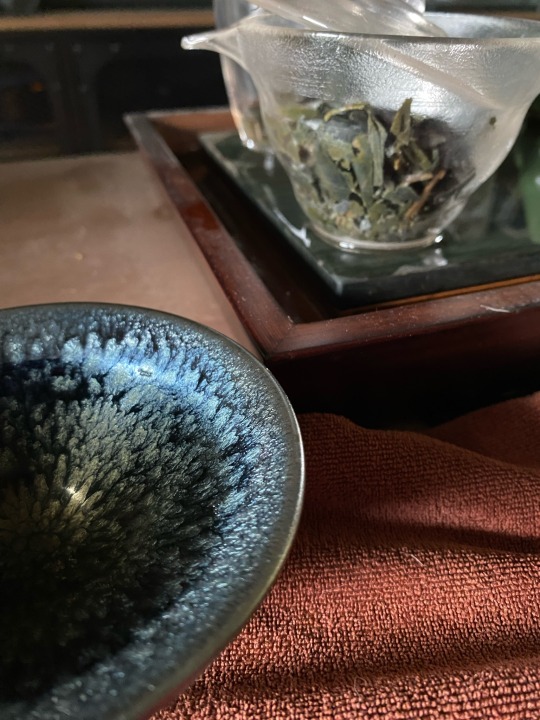
This one is very astringent. It’s so good.
I started at 100°C at ~5s, and have dropped it to 90°C at ~5s as the coin opened up.
I’ve been meaning to have a sheng, and the wheel hath provided!
#tea#tea addict#tea is good#tea is life#tea time#tea drinker#tea tea tea#tea ware#teaware#tea enthusiast#tea things#tea is love#pu’er#puerh#tea aesthetic#tea for one#pu’er tea#sheng pu’er#tea lover#tea leaves#tea life#tea cup#tea culture#tea break#tea brewing#tea my beloved#puerh tea#sheng puerh#sheng pu’er tea#sheng puerh tea
6 notes
·
View notes
Photo

Wuliang Pu’er Tea Comparison #newyorkteasociety #teaclub #sheng #gushu #wuliangshan #puer #teacomparison #teasession (at Forest Hills) https://www.instagram.com/p/Ci8mgaUunQl/?igshid=NGJjMDIxMWI=
0 notes
Text
The 2019 Sprudge Guide To Teamakers and Ceramics
I hesitated in writing this guide. The world of teaware is vast and intimidating, and can be a money pit of fakes and forgeries. It is also where so much of the joy in loving tea can be derived. Ultimately our team felt Tea Week would be incomplete without some sort of feature on teaware. My very best attempt at this here in 2019 is what follows.
For coffee lovers, you might think of teaware as like the espresso machine of the tea world. To casual drinkers or the untrained eye, it just looks like a nice object that makes the thing you drink—and nothing more. But for those who obsess it can become an endless quest of sourcing and seeking, of pride and cost. A life’s pursuit, even. There is no small amount of money to be spent at the top end of teaware buying—may I call your attention to the infamous Chengua-era “chicken cup,” which sold for $35 million at Sotheby’s in 2014. For our purposes this guide caps objects at the $500 range, with prices average considerably less for most of the offerings.
Photo by Anthony Jordan III.
Note that this guide only barely touches on the world of Yixing, the traditional tea pottery of Jiangsu, made using porous clay in a style dating back to the 10th century. This is its own whole world, a vast guide I don’t feel prepared to lead at this time—perhaps in a few more years.
For now, these wholesalers and makers are more than enough to get you started and find new favorites. The guide below is hopelessly biased towards my own personal taste but hey—teaware is supposed to be personal. That’s part of the fun, and it’s something I hope you are inspired to explore further with support from this guide
A Solid Foundation
Photo courtesy of Rishi Tea.
Rishi Tea
Rishi is a truly solid place to get started with home teawares, offering for example this workhorse starter gaiwan for $12, and this cute little basic tea tray for $25. They’ve also got a lovely collection of flex items, like this stunning blue studio-made celadon “fairness pitcher” from Taiwan, or this rustic clay and mineral cup. Rishi ships free domestic at $25, which is plenty to get started making gong fu cha—pair that $12 gaiwan with, say, a couple of oolong samples (we like Rishi’s Iron Goddess of Mercy and Phoenix Dancong) and you are off to the races.
Photo by Anthony Jordan III.
Breville
Breville is the presenting sponsor of Tea Week on Sprudge—for which we thank them!—but they also produce a range of tea-focused hot water boilers and teamakers we have no lie legit been happily using in Sprudge Studios for the last few years, long before this content package was a twinkle in the editorial eye. The Breville Tea Maker Compact‘s tech allows you to set up brew parameters for whatever kind of tea you’re into; the machine’s automated basket then plunges your brew into water heated to your temp of choice. When the cycle is done, the basket lifts out of the water, ensuring you won’t oversteep. I’d liken this machine to something like a nice home batch brewer, a simplifier that’s perfect for tea making on a busy morning or for large groups (for which the classic Tea Maker is a bigger, better fit).
Another option is the Breville Smart Tea Infuser, which we especially dig these Tea Makers for their handiness with single-steep tisanes, like those from Smith Tea, Song Tea, and Tea Dealers featured in our tisane spotlight. We also really like their IQ Kettle Pure (pictured above) for heating water consistently and at scale—you can transfer from there into a ceramic kettle for service, or pour directly from the Breville IQ.
If you are looking for a fusion of tea, taste and tech, this is the gear for you.
Photo courtesy of Manual.
Manual Tea Maker No1
Chicago tinkerer Creighton Barman puts out new stuff each year, typically pre-funded on Kickstarter, but we’re still in love with this 2016 release, the Tea Maker No1, a modernist reinterpretation of the gaiwan built for ease of brewing. Double-walled glass is the hook here, which keeps the Tea Maker cool to the touch throughout the brewing process, and also gives you peek-a-boo viewing at all that beautiful steeping action. I think these gaiwans offer a rare degree of utility no matter where you are in terms of tea knowledge and experience—they are rad and very forgiving for beginners who are still mastering the whole gaiwan thing, but also fun for experts who want to incorporate western and modern influences into their teaware collection.
Let’s Geek Out
Photo by Anthony Jordan III.
Bitterleaf
With full respect to Bitterleaf’s collection of teas for drinking (featured in our buying guide), the site’s assortment of teawares, tea tools, tea pets, and assorted Chinese tea ephemera is truly deep and excellent.
From beautiful little studio tea cups (starting around $8) to Chaozhou teapots in a range of classic styles (more like $80) to really cute hand-painted animal vessels ($35) to all manner of entry-level trays and supports (prices vary) and much more, there are hundreds of pieces of tea kit to shop from and swoon over at Bitterleaf. I especially like their selection of “tea pets,” little clay figurines typically depicting children or animals, incorporated into tea service as a symbol of good luck. You “feed” the tea pet with excess water or tea throughout the teamaking process, with the clay left to develop a lovely luster over repeat feedings. (It’s fun. Don’t @ me.)
Photo by Anthony Jordan III.
Song Tea
Song Tea are also featured in our tea buying guide for their literally life-changing (as in it changed my life) compendium of meticulously curated tea offerings. But the ceramics offered by Song are on another level. Founder Peter Luong has an eye for relatively young and emerging artists, making commissions across his travels to Taiwan. Works by artists like Zhang Yun Chen (Nantou), Qiu Qing Yun (Meinong), and Hu Tie Ha (Jiefen) evoke what’s possible at the blurred edge of collectible art and practical working pottery. I cannot realistically see myself being someone who collects art to hang on the wall, but the idea of owning this Husk #2 tea bowl by Zhang Yun Chen gives me heart palpitations. If you are, say, truly enjoying tea week and would like to, you know, say thank you as a grateful reader or whatever, please buy this for me. DMs are open.
Photo courtesy of Pu.Erh.Sk
Pu-Erh.Sk
Based in Slovakia, Pu-Erh.sk is an online webshop shipping worldwide, focused on sheng and shou Pu’er teas from Yunnan. Their tea sourcing is concise and well-considered—the gushu heads love ‘em—but for me the site’s focus on Eastern European ceramicists and teaware artisans has been a revelation. Czech artists like Jiří Duchek and Jura Lang are building truly compelling, one-of-a-kind teawares that fuse traditional regional clays with far-flung design influences from the east and west. Pieces like this gorgeous Jura Lang shiboridashi (a kind of Japanese easy gaiwan) are handmade, wood-fired, visually stunning, and sure to grow in beauty over repeated use. For beginning collectors and enthusiasts to be able to get in the door with an artist-specific work like this at just €65 is really special. Elsewhere on the site, Swedish artist Stefan Andersson makes a range of gorgeous wares, while Norwegian brand Ad.Infinitum offers bespoke and vintage tea ceremony linens. All of these makers are brands with followings in their own right, collected by Pu-Erh.sk for easy ordering and global shipping.
Everybody’s taste is different, and a lot of tea ceramics collections start and end in Asia, with no deviation. But I really grok the vibe of this stuff coming out of Eastern Europe. To get in at the cutting edge of small maker European ceramics artistry, go here.
Ceramicists To Watch—And Collect
*A note: While I am personally passionate about ceramics and hopelessly biased towards its validity and urgency as an art form, I also think you—whomever you are reading this—might really dig works from the artists below. The idea of placing a commission with an individual artist might seem intimidating or overly expensive, but we’re not talking George Ohr here; works from these artists don’t typically cost more than $100 for a single piece of teaware, and more like $30-$50 for a handmade cup or set of cups. For less cost than a single dinner at a fancy restaurant you can own and put into daily use your own personal work from a talented artist. It will make your tea taste better, your kitchen look cuter, and who knows—in 50 years you might get a segment on the Antiques Roadshow.
Here are a few talented and emerging ceramicists to follow.
Photo via Song Tea.
Lilith Rockett
Portland ceramicist Lilith Rockett works across a range of expressions for home pottery, including plates, lighting, vases, and abstract decorative objects. Her style—lustrous soft milky white porcelain, entirely handmade—translates well into tea, especially the stunning wheel-thrown porcelain gaiwan. A significant amount of tea consumed for the purposes of Tea Week on Sprudge was steeped in just such a piece. Rockett has a webshop, and also accepts limited commissions. You can find her work at some of the best restaurants in the United States, including The French Laundry (Napa), Smyth (Chicago), Saison (San Francisco), and Nodoguro (Portland).
Follow Lilith Rockett on Instagram.
Photo via Carole Neilson.
Carole Neilson
Buzzy San Francisco-based artist Carole Neilson fuses the rural pottery traditions of her native Alsace with an irresistible contemporary immediacy. Her eye-catching signature glazes evoke smoke fumes and clouds of dust, making for pottery with an earth-dappled glow. Neilson’s range of works include original sculpture pieces and stunning bowl and plate sets, but for tea (and coffee!) drinkers her small cups and pitchers make a lively addition to any collection. Neilson’s work is blowing up, with a growing list of stockists, gallery exhibitions at spaces like Hugomento, pop-up dinners around the country (including a recent dinner at Omaha’s Archetype Coffee), and a successful recent series of artist grants. She is truly an artist to watch. Neilson has a webshop and accepts limited commissions.
Follow Carole Neilson Ceramics on Instagram.
Photo by Anthony Jordan III.
Qi Pottery
Kim Whyee Kee of Qi Pottery first learned his art behind bars. After serving time in the Singaporean corrections system for gang-related crimes, Kee graduated from an arts college, helped co-found a variety of initiatives working with at-risk youth, and launched Qi Pottery in 2016. His style echoes ancient tea traditions, but does so through a burst of heart-stopping colors that demand attention. Vivid pinks, deep blues, mesmerizing blacks, coral reds—Easter egg pastels that fuse the practical nature of teaware with the elegance of a home statement piece. But this is no gimmick maker—Qi Pottery’s mastery extends to more simple forms, like these beautiful rusted large format cups.
Photo by Anthony Jordan III.
It’s simply some of the most beautiful ceramics work I’ve ever seen, and for an artist with just a few public showings so far, you can certainly expect these pieces to become more and more sought after and valuable over the years. Qi Pottery has a website, but no webstore. If you’re interested in purchasing an existing piece or making a commission, please contact the artist directly via email or Instagram.
Follow Kim Whye Kee of Qi Pottery on Instagram.
Photo by Anthony Jordan III.
Arturo Alvarez
A full-time artist dedicated to original teawares, Arturo Alvarez is based in Olympia, Washington, and crafts art in a range of styles and expressions. We commissioned Alvarez for our office tea set at Sprudge Studios (we’ll be serving tea there this week as part of the Tea Week fun), and follow his regular updates on Instagram, where his account @your_pencil is part of a thriving Instagram ceramics community. Perhaps his most distinctive pieces involve incorporating found materials, including driftwood handles made from wood found across Puget Sound beaches, but this is an artist growing and advancing his craft before our very eyes, letting it all play out online. Follow him and watch along—it feels like he’s debuting new pieces almost every day.
Photo by Anthony Jordan III.
Arturo Alvarez sells a limited number of teawares online via Etsy. Contact the artist directly via Instagram for commissions or to purchase pieces featured on his account.
Follow Arturo Alvarez on Instagram.
Photo by Anthony Jordan III.
Andrzej Bero
A teaware potter out of Warsaw, Andrzej Bero specializes in the shiboridashi—a gaiwan variant that’s easy to use and, in the right hands, a piece of working art. Bero’s shibos are made from clay that feels coarse and tactile to the touch, in a range of dark reds, greens, and blues. This style translates especially well to larger pieces, like his 300ml teapots, which are hotly in demand for tea services around the world. Andrzej Bero has a website but no webstore; a limited number of his works are available for purchase via the aforementioned Pu-Erh.sk. Contact the artist directly for commissions and availability.
Follow Andrzej Bero on Instagram.
Jordan Michelman is a co-founder and editor at Sprudge Media Network. Read more Jordan Michelman on Sprudge.
Editor: Scott Norton.
Top photo by Anthony Jordan III (@ace_lace).
Sprudge Tea Week is presented by Breville USA.
The post The 2019 Sprudge Guide To Teamakers and Ceramics appeared first on Sprudge.
from Sprudge https://ift.tt/2TkAiuQ
0 notes
Text
2009 Year Sheng Pu'er Yunnan Long Dao Raw Pu'er Cake Shen Tea 100g
2009 Year Sheng Pu’er Yunnan Long Dao Raw Pu’er Cake Shen Tea 100g
View On WordPress
0 notes
Photo

2013 Chen Sheng Top Nanruqingbing Sheng Raw Cake Pu-erh Tea Chinese Chen Sheng Hao Old Tree Pu’er Tea 400g http://ift.tt/2j84Mci
0 notes
Text
JalamTeas Zhang Lang Sheng 2014

L’offre du mois de décembre 2017 de JalamTeas est un pu’er sheng qui a été vieillit 3 ans. Présenté comme un thé avec un peu d’âge, il faut garder un peu de perspective car 3 ans sur un thé qui pourrait vieillir des décennies, ce n’est pas très vieux. Même que parfois, à cet âge, le thé entre dans une phase intermédiaire qui n’est pas vraiment délicieuse. La cueillette provient de Xiding à une altitude de 1700m et réalisée à l’été 2014.
La compression est médium comme toujours. Le vert est moins vibrant que sur une galette fraîche mais les feuilles sont clairement jeunes, testament des conditions relativement sèches d’entreposage.
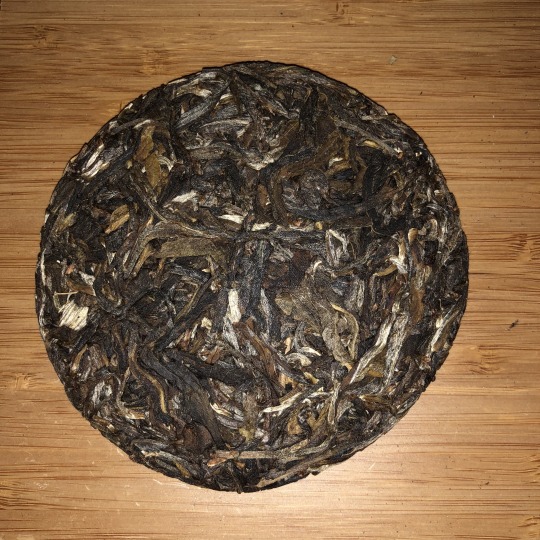
Paramètres de session: 10.2g de feuilles, gaiwan de 150ml, eau à 98°C
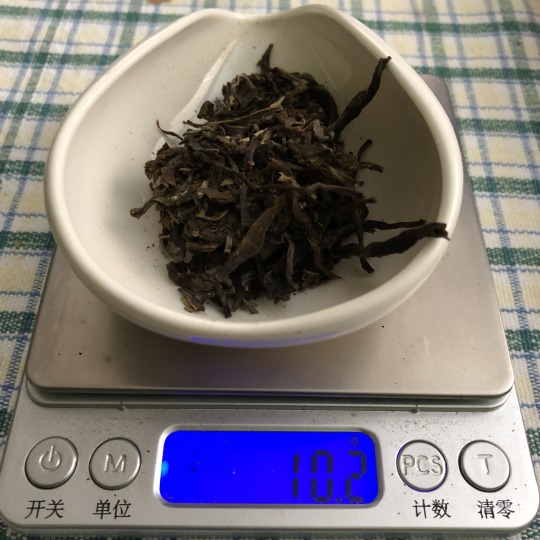
Feuilles sèches: Arômes de fruits exotiques. Aucune odeur d’entreposage malsain, ce qui est une bonne nouvelle.
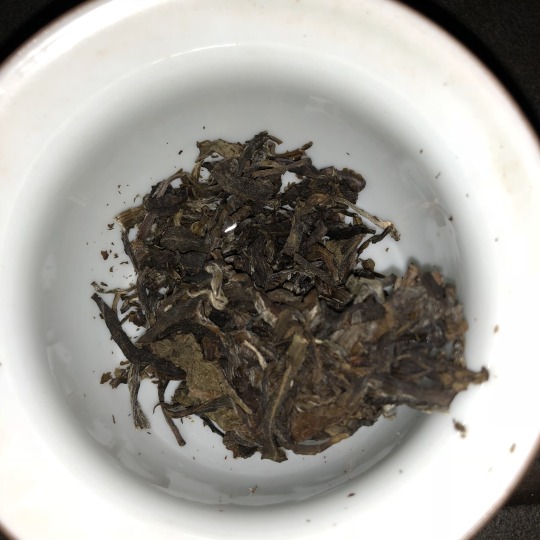
Feuilles rincées: Le feuilles rincées ont une odeur d’herbe fraîchement coupée et de chou bouillit. C’est un peu surprenant et c’est soit de l’entreposage qui disparaîtra avec les premières infusion ou ce thé a besoin de vieillir quelque temps encore.

Première infusion: La liqueur est pâle. Heureusement les saveurs sont plus traditionnelles tirant tout de même sur l’herbe, l’amertume est légère.
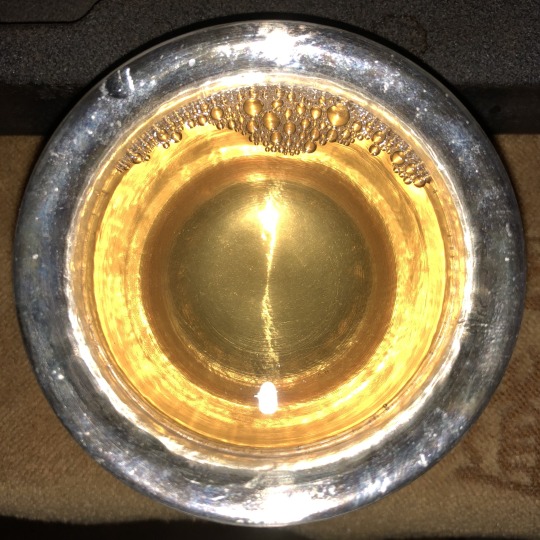
Infusions 2-3: L’amertume herbale reste dominante avec quelques notes mielleuses qui commencent à apparaître dans la 3e infusion. Je crois que l’entreposage “sec” était un peu trop sec... On verra si ma solution d’entreposage pourra redonner un peu de vie à ces feuilles, mais il faudra attendre quelques années pour le savoir.


Infusions 4-6: Après une nuit de repos dans le gaiwan, j’espère que l’humidité résiduelle va réveiller un peu les feuilles. Je crois qu’on rentre maintenant un peu plus dans la matière première, avec des notes végétales qui commencent à s’éloigner de l’herbe fraîche. La texture est un peu plus visqueuse, mais je crois qu’on est vraiment dans la phase intermédiaire de ce thé et qu’il faudra attendre au moins 3 ans avant de le revisiter.



Infusions 7-9: Ces infusions ne révèlent rien de nouveau, autrement qu’il y a tout de même un peu de longévité à ces feuilles. Les prochaines infusions vont clore la session.



Infusions 10-12: Infusions de 5, 10 et 15 minutes. Encore une fois, ces infusions ne révèlent rien de bien nouveau. Un thé qui laisse un peu à désirer, rien de mauvais mais il faudra de la patience pour vraiment pouvoir commencer à l’apprécier.

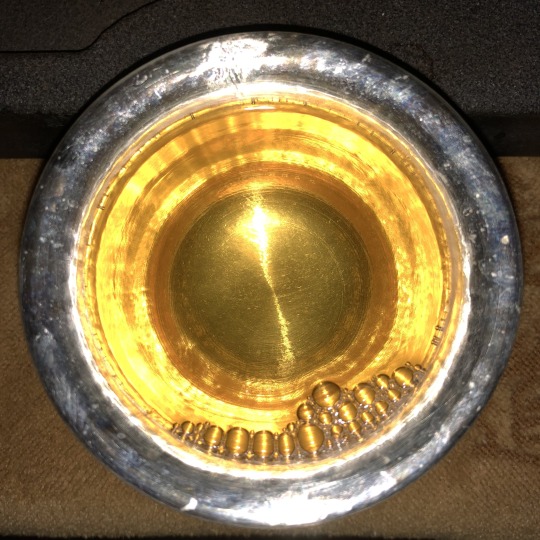

On retrouve dans le gaiwan un mélange de bourgeons, de petites et de moyennes feuilles, typiques pour un thé de plantation d’environ 30 ans. Les feuilles sont encore bien vertes. À surveiller annuellement pour les prochaines années.
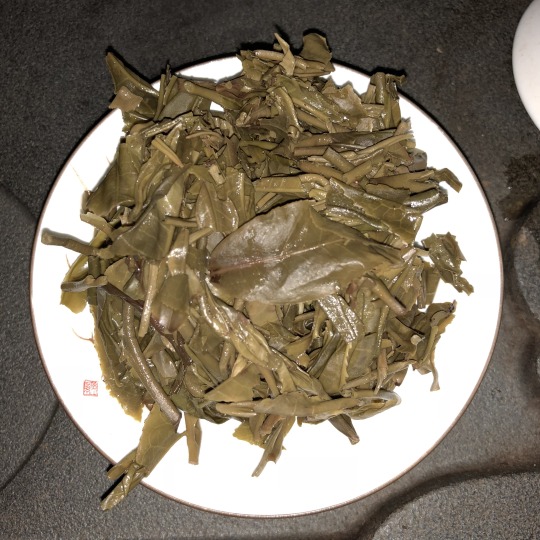

0 notes